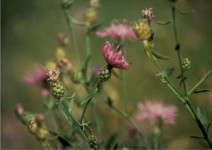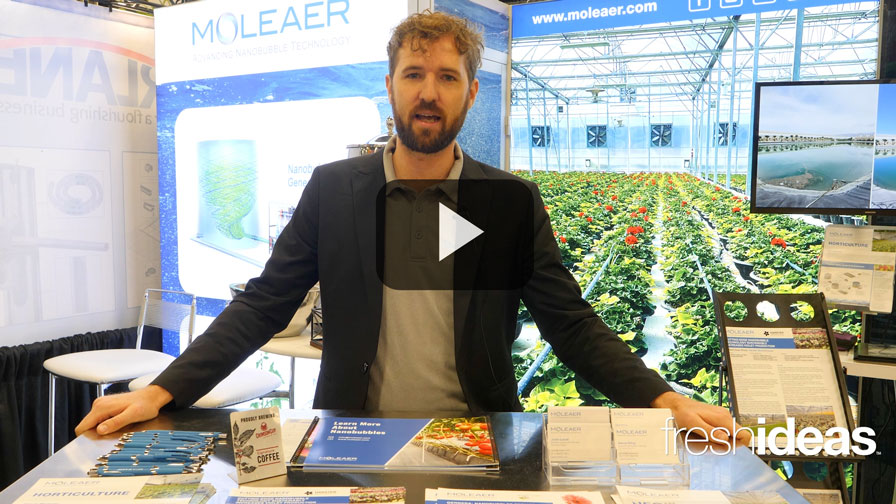The Green Menace

Habitat destruction is the number one greatest threat to biodiversity, and second place goes to the spread of invasive species. Invasive plants overcrowd native vegetation, affect animal habitats and can even increase flooding and fire hazards. While most landscape plants are not invasive, species that do escape and invade can cause major ecological damage.
According to the California Association of Nurseries and Garden Centers (CANGC), which represents wholesale nursery growers, retail garden centers and associated businesses in California, the landscape trade is to blame for about 85 percent of invasive woody plants in the United States, while 53 percent of California’s invasive species have horticultural origins.
In order to prevent the spread of invasive species, CANGC recently approved voluntary codes of conduct for nursery professionals to follow to prevent aggressive plant invasions.
CANGC is developing a plan for implementing the codes in California garden centers and nurseries by participating in Cal-HIP, a collaborative industry effort to prevent garden plants from invading wildlands in California. Cal-HIP is working to find and identify problem plants in California’s various regions. They’ll then recommend safer but just as attractive alternative plants for nurseries to offer. Education will be a big part of the process, and Cal-HIP coordinator Terri Kempton says working with the horticultural industry will be an essential part of eradicating the problem. “As we educate the industry, we’re trying not to focus on what can’t be sold, as much as where we need to shift our energies,” she says.
Cal-HIP plans to give growers a chance to adjust their crops and retailers a chance to adjust what they sell in a way that works for them and then use positive public relations to help them promote the alternatives. “Next growing season we’ll be making a huge educational push to the gardening public, and that’s to try to make sure we’re supporting the industry by shifting consumer demand away from invasives and toward alternatives,” says Kempton.
Future plans also include development of a predictive protocol or risk assessment tool that will help determine ahead of time if a plant is likely to become invasive. “Nurseries will have a little bit of power in their hands to be able to make some good choices,” says Kempton. “We want to make sure we’re protecting our resources, and we can do that by making sure the plants we use in our gardens and landscapes will not invade wildlands.”
Research And Collaboration
Colorado State University scientists are also spearheading a project to combat invasive species. They are encouraging researchers around the world to collaborate to predict the behavior of invasive species and the ecology and evolution of the invasions. The project is being funded by a grant from the National Science Foundation.
The network of scientists involved in Colorado State University’s project will hold annual gatherings for researchers to develop a framework based on the latest information they’ve gathered. They’ll then coordinate research projects by exchanging research and holding educational symposiums. The group also will develop lesson plans to educate the public about the consequences invasive species can have on ecosystems.
“Basically, people are just blissfully ignorant, and we don’t realize that plant we’re buying from the nursery from South Africa might turn into a problem,” says Colorado State University professor of weed science George Beck. “This is a very significant ecological issue that cannot be ignored. If we continue to ignore it, we’re going to lose a lot of economic vitality.”
Researchers have several different hypotheses on how and why invasive species take over. Colorado State’s project will look at the possibility that all the hypotheses work simultaneously to allow biological invasions.
Ruth Hufbauer, lead researcher on the project, says the idea for the grant was to get a group of scientists together to integrate these hypotheses and figure out how they relate to each other, ultimately to draw general patterns for what is working when.
“There are a lot of ideas people have for why invasions happen,” Hufbauer says. “You might think that the plants and animals in a place are really well adapted to that particular climate and environment and they would be able to outcompete something that came from elsewhere, but that’s not what happens. Somehow things come from elsewhere and do a lot better, and there are a lot of different ideas about why this is. Understanding which of those ideas is more correct or fits in different situations is really critical, because it influences the way you manage things.”
Enemies Provide Balance
One of the hypotheses is that certain species leave their natural enemies behind when they’re introduced in new locations, which allows them to thrive. The native plants that live in the same location, however, are still susceptible to the pests and diseases that affect them, causing those plants to lose ground to the new, invasive species.
Another hypothesis is that the invaders do well when there’s a lot of disturbance in an area.
“It’s a symptom of a system that isn’t being well cared for,” says Hufbauer.
The problem, though, is it’s difficult to determine which of these theories is correct, and Hufbauer notes that until we know exactly what’s causing an invasion, it could be detrimental to attempt treatment. “If natural enemies (theory) is correct, that suggests that you could do something like biological control — introduce some of the very specialized things to help bring back some kind of balance of nature. But if it’s not correct, then doing biological control has many inherent risks,” says Hufbauer. “If enemy release isn’t what’s driving the invasion, then you’re not going to get anywhere by introducing something.”
The best solution, of course, would be to avoid the problem altogether by supporting the planting of natives, Hufbauer adds. While a groundcover from Siberia, for example, may perform well in colder U.S. climates, it may not be the best choice. “Things like that can be fantastic and beautiful, but they also pose a really big risk because they can go wild,” she explains. “We all love our beautiful plants and flowers, but unfortunately it turns out there can be consequences to that in the long run.”
Hufbauer says Colorado State’s project will help uncover the most important questions in invasion biology and how those questions can be addressed.
“In terms of the science, it’s really just to come to grips and have some definitive answers for people about why invasions happen,” she says.









